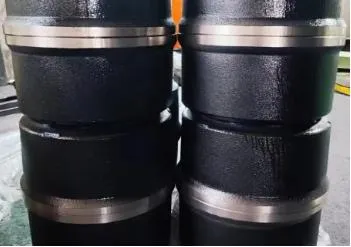
-
 Afrikaans
Afrikaans -
 Albanian
Albanian -
 Amharic
Amharic -
 Arabic
Arabic -
 Armenian
Armenian -
 Azerbaijani
Azerbaijani -
 Basque
Basque -
 Belarusian
Belarusian -
 Bengali
Bengali -
 Bosnian
Bosnian -
 Bulgarian
Bulgarian -
 Catalan
Catalan -
 Cebuano
Cebuano -
 Corsican
Corsican -
 Croatian
Croatian -
 Czech
Czech -
 Danish
Danish -
 Dutch
Dutch -
 English
English -
 Esperanto
Esperanto -
 Estonian
Estonian -
 Finnish
Finnish -
 French
French -
 Frisian
Frisian -
 Galician
Galician -
 Georgian
Georgian -
 German
German -
 Greek
Greek -
 Gujarati
Gujarati -
 Haitian Creole
Haitian Creole -
 hausa
hausa -
 hawaiian
hawaiian -
 Hebrew
Hebrew -
 Hindi
Hindi -
 Miao
Miao -
 Hungarian
Hungarian -
 Icelandic
Icelandic -
 igbo
igbo -
 Indonesian
Indonesian -
 irish
irish -
 Italian
Italian -
 Japanese
Japanese -
 Javanese
Javanese -
 Kannada
Kannada -
 kazakh
kazakh -
 Khmer
Khmer -
 Rwandese
Rwandese -
 Korean
Korean -
 Kurdish
Kurdish -
 Kyrgyz
Kyrgyz -
 Lao
Lao -
 Latin
Latin -
 Latvian
Latvian -
 Lithuanian
Lithuanian -
 Luxembourgish
Luxembourgish -
 Macedonian
Macedonian -
 Malgashi
Malgashi -
 Malay
Malay -
 Malayalam
Malayalam -
 Maltese
Maltese -
 Maori
Maori -
 Marathi
Marathi -
 Mongolian
Mongolian -
 Myanmar
Myanmar -
 Nepali
Nepali -
 Norwegian
Norwegian -
 Norwegian
Norwegian -
 Occitan
Occitan -
 Pashto
Pashto -
 Persian
Persian -
 Polish
Polish -
 Portuguese
Portuguese -
 Punjabi
Punjabi -
 Romanian
Romanian -
 Russian
Russian -
 Samoan
Samoan -
 Scottish Gaelic
Scottish Gaelic -
 Serbian
Serbian -
 Sesotho
Sesotho -
 Shona
Shona -
 Sindhi
Sindhi -
 Sinhala
Sinhala -
 Slovak
Slovak -
 Slovenian
Slovenian -
 Somali
Somali -
 Spanish
Spanish -
 Sundanese
Sundanese -
 Swahili
Swahili -
 Swedish
Swedish -
 Tagalog
Tagalog -
 Tajik
Tajik -
 Tamil
Tamil -
 Tatar
Tatar -
 Telugu
Telugu -
 Thai
Thai -
 Turkish
Turkish -
 Turkmen
Turkmen -
 Ukrainian
Ukrainian -
 Urdu
Urdu -
 Uighur
Uighur -
 Uzbek
Uzbek -
 Vietnamese
Vietnamese -
 Welsh
Welsh -
 Bantu
Bantu -
 Yiddish
Yiddish -
 Yoruba
Yoruba -
 Zulu
Zulu
Jan . 24, 2025 03:39
Back to list
disc and drum brake difference
Understanding the differences between disc and drum brakes is essential for automotive enthusiasts, mechanics, and consumers looking for a reliable braking system. While both types serve the fundamental purpose of slowing or stopping a vehicle, they operate distinctly and are suited for different needs and vehicle types.
Trust in braking systems is built through rigorous testing and adherence to safety standards. Disc brakes, often seen in new vehicle models, undergo extensive development to improve materials and designs, reducing weight while increasing durability and efficacy. Meanwhile, drum brakes have evolved from their humble beginnings but remain largely unchanged fundamentally, relying on their tried-and-true simplicity. The decision to choose between disc and drum brakes should consider the vehicle's primary use, terrain, driving habits, and budget. Performance cars, trucks, and vehicles operating in regions with heavy rainfall or hilly terrains benefit from the assertiveness of disc brakes. Conversely, smaller passenger vehicles used predominantly in urban settings thrive on the efficiency and cost-effectiveness of drum brakes. Safety experts and automotive engineers generally advocate for a mixed braking system, where vehicles have disc brakes on front wheels and drum brakes on the rear. This setup optimizes cost-efficiency while maintaining ample stopping prowess, aligning with the braking force distribution—more significant in the front. In the landscape of automotive safety, understanding when and where to use each type of brake can guide consumers and manufacturers alike in making informed choices. Continuous innovation in materials and technology hints at future advancements, potentially bridging the gap further, but for now, recognizing their distinct benefits maintains optimal safety and performance on the roads.


Trust in braking systems is built through rigorous testing and adherence to safety standards. Disc brakes, often seen in new vehicle models, undergo extensive development to improve materials and designs, reducing weight while increasing durability and efficacy. Meanwhile, drum brakes have evolved from their humble beginnings but remain largely unchanged fundamentally, relying on their tried-and-true simplicity. The decision to choose between disc and drum brakes should consider the vehicle's primary use, terrain, driving habits, and budget. Performance cars, trucks, and vehicles operating in regions with heavy rainfall or hilly terrains benefit from the assertiveness of disc brakes. Conversely, smaller passenger vehicles used predominantly in urban settings thrive on the efficiency and cost-effectiveness of drum brakes. Safety experts and automotive engineers generally advocate for a mixed braking system, where vehicles have disc brakes on front wheels and drum brakes on the rear. This setup optimizes cost-efficiency while maintaining ample stopping prowess, aligning with the braking force distribution—more significant in the front. In the landscape of automotive safety, understanding when and where to use each type of brake can guide consumers and manufacturers alike in making informed choices. Continuous innovation in materials and technology hints at future advancements, potentially bridging the gap further, but for now, recognizing their distinct benefits maintains optimal safety and performance on the roads.
Latest news
-
Rear Drum Brakes Maintenance TipsNewsAug.04,2025
-
Key Components Affecting Brake Drum FunctionNewsAug.04,2025
-
Important Inspection for Truck Drum BrakeNewsAug.04,2025
-
How to Prepare for Changing Rear Drum BrakesNewsAug.04,2025
-
Essential Tools for Cleaning Drum Brakes ProperlyNewsAug.04,2025
-
Brake Drum Function GuideNewsAug.04,2025
-
Safety Features of Red Brake DrumsNewsAug.01,2025
